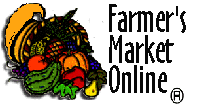Setting Prices
The price of a product can make the difference between success and failure.
Good prices make customers think they are getting their money's worth and make you think you are getting a fair return on your investment of time and money.
How much can you charge?
Consider comparable commercial products, prices charged by others in your community for similar products, and "what the traffic will bear." Consult business people in the community. Prices should reflect all fixed and variable expenses in the business and provide what you consider a reasonable profit. Keep prices competitive and in a range that customers are willing to pay. The following pricing methods are guides that you can adjust to your situation.
Through experience, you will learn to set up your own pricing formula. Don't worry if the prices you set are a little higher than your competitors if you are sure your product is better in some way. Be prepared to explain your price, if asked: "I use real butter and fresh eggs--not powdered--in my pound cake." Be careful not to criticize your competition!
Cost-Based Pricing
This method uses unit costs of ingredients, expenses, and labor to determine the price (Direct Costs + Labor + Overhead Expenses = Total Costs). Here's an example. As a maker of homemade bread, you have fixed expenses of $50 per month; you plan to work one day each week, or 32 hours per month; your ingredient cost is $0.50 per loaf; and you can make five loaves in an hour. How much should you charge for each loaf?
Step 1: Figure the productive working hours (total hours spent in actually making the product). Seven hours of the 32 are spent in marketing, bookkeeping, shopping, and delivery, so they are not productive hours. Therefore, your total productive hours per month are 25 (32 - 7 = 25).
Step 2: Figure expenses per hour. Divide the monthly fixed expenses by the productive working hours in one month ($50 ÷ 25 hours = $2 fixed expenses per hour).
Step 3: Figure ingredient cost per hour. Multiply the ingredient cost of one loaf ($0.50) by the number of loaves you can make in an hour ($0.50 x 5 = $2.50).
Step 4: Set labor cost. In this example, you decide you are willing to work for $6 per hour.
Step 5: Add your totals:
Fixed Expenses $2.00
Ingredients $2.50
Labor $6.00
Total per hour cost $10.50
Step 6: Divide the total per hour cost by the number of loaves you can make per hour ($10.50 ÷ 5 = $2.10).
Estimating Profits
Profit is the income left after all direct costs, labor, and overhead expenses have been paid. To have money left over, a profit factor or profit margin must be calculated in initial pricing. After the total costs are calculated, the profit factor is added to get the final price.
Total Costs + Profit = Price
or
(Direct Costs + Labor + Overhead Expenses)
+ Profit = Price
The amount to add for profit is based on the standard for the type of business. Generally, this amount ranges from 10 to 25 percent. An initial mistake that many businesses make is not adding in a profit margin to their pricing strategy. If this is not done, there will be no money for growth or expansion of the business.
Retail Pricing
While the principles for pricing a product or service are essentially the same, there are some differences that need to be considered when wholesaling a product to a retailer. The price figured above is the wholesale price. To arrive at the retail price for a product or service, a retail margin is added. This is usually two to three times the wholesale price and is called the markup.
Wholesale Price x Retail Margin = Retail Price
or
(Direct Costs + Labor + Overhead Expenses + Profit) x Retail Margin = Retail Price
After determining the price, compare this price with similar products. Will customers pay $4.20 to $6.30 retail for a loaf of your bread? If the price is considerably higher than a similar item made by the competition, consider these options:
* Reduce ingredient cost
* Reduce labor cost
* Increase per hour production
* Decrease expenses
* Improve work methods, which may accomplish all four of the above
* Reconsider the business venture
A wholesaler may crossover and be a retailer at times. When this happens, the wholesaler must be careful not to compete with or undercut wholesale customers. For example, bread may be sold to a retailer for $2.10 knowing that the retailer is going to markup the price to cover costs. In this case, the wholesaler who also sells directly to the retail customer needs to sell at retail prices. If the foods business wholesaler sells directly to the retail customer at a lower price than the retailer, the business will lose wholesale accounts.
If wholesaling to retailers or selling to retailers through a distributor or "sales rep," the retailer may ask for discounts when buying in bulk and distributors may ask for a percentage of what they sell. Both of these are overhead "costs" that must be incorporated into the original pricing formula.
Price Sheet and Policies
Have a price sheet that is available to customers. On this sheet, list your basic policies. Post both prices and policies in your office as well. Some basic policies could include:
* Minimum order size
* Time needed to fill order
* Delivery schedule
* Advance payment and billing procedures
* Returns
* Cancellations
* Price changes
* Other rules you will follow
Remember, pricing is as much an art as it is a science. Your customer has to be willing to pay your price or your business will not be a success.




